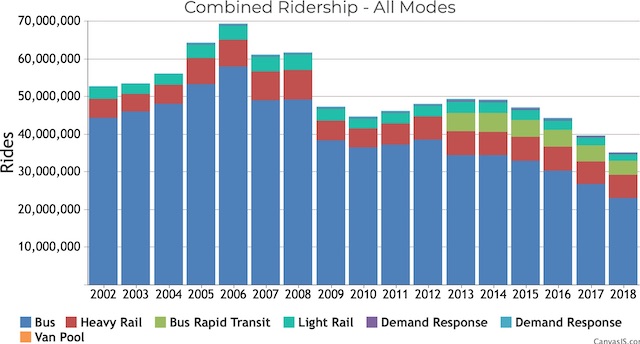The Guardian has published comparison maps showing historic transit systems vs. modern systems in those same cities, leading commenters to lament that “big oil and the automobile industry destroyed public transport.” Yet the maps that make up the article were made more for artistic purposes and not as any scientific study of the history and fate of public transit.
The first thing to note is that the maps only include rail lines, not buses. Yet, as another article in the Guardian notes, American transit systems began converting rails to buses as early as the 1920s, with 20 percent of them having completed the conversion by 1930 (years before the so-called General Motors streetcar conspiracy). The maps misleadingly make it appear that transit service has shrunk when all it did was change modes.
The second thing to note is that, on most maps, the artist only included streetcars and rapid transit (light and heavy rail). One historic map shows interurban lines, but none show commuter rail. In Los Angeles, for example, commuter rail has replaced some of the longer-distance Pacific Electric lines, but this isn’t shown on the maps. Continue reading








